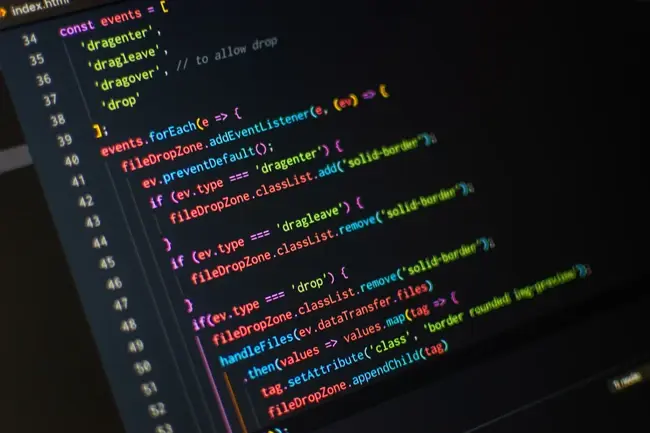
There's no denying the pivotal role code reviews play in software development. This process is instrumental in delivering high-quality software.
Unreviewed code is more vulnerable to defects than reviewed code. It raises concerns on many fronts, especially in mission-critical applications where the margin for error is practically zero.
If you are ready to level up your code review process, we have something for you.
Below, we share the top practices that can enhance the quality and effectiveness of your code reviews.
By following these tips, you can create a positive and efficient review environment, support new team members, and improve code review efficiency through metrics and time management.
Let's get started.
Create a Code Review Checklist
Mistakes tend to repeat themselves, especially in a team environment.
Checklists can be your solution here. They are an efficient tool for preventing recurring errors.
They also provide a clear standard for reviews, letting each member of your software solutions company know what is expected of them. This consistency in expectations not only helps improve the reviewing process but also aids in tracking for reporting and ongoing improvement measures.
When you're reviewing your code, there are several key areas to consider.
The first is readability. Ask yourself, is the code straightforward and to the point? Any redundant or superfluous elements will make it more difficult to understand later on, so eliminate them where possible.
Next, consider the issue of security. As cyber-attacks become increasingly common, this is a vital component of any coding project. Does this code leave open potential entry points for cybercriminals? If the answer is yes, then adjustments need to be made.
Another critical question relates to test coverage. In other words, have all possible cases been properly tested, or is there a need to expand your testing field? Ensuring your code has been thoroughly examined under different conditions and scenarios can save a lot of trouble down the line.
You shouldn't overlook architecture, either. Effective code isn't just about its function — how it's designed is equally important. Structuring your code into separate modules, each responsible for a specific task, can be helpful.
Lastly, think about reusability. Does your code have elements that can be used again in other parts, like components, functions, or services? Reusable codes not only reduce redundancy but also speed up your development process.
It would also be best to examine code changes in the context of the entire codebase and the situation. Doing so will help teams become more productive and consider the impact of the code changes on the larger system.
Point out improvements and fixes for problems, and keep changes focused to avoid cramming too many changes into a single review.
Establish a Positive Review Environment
When providing feedback on code changes, it's important to maintain a respectful and constructive attitude.
Avoid using overly critical or negative language that may discourage the code author. Instead, focus on highlighting the positive aspects of their work and offer suggestions for improvement in a supportive manner.
Use a professional and positive tone. Ask open-ended questions and offer alternatives instead of giving solutions or insisting on specific problem-solving approaches.
At the same time, assume the reviewer might be missing some context and ask for clarification. Show empathy towards the effort put into writing the code.
By approaching code reviews with a positive tone, you can foster a collaborative and welcoming environment where engineers feel encouraged to improve their skills continuously.
Review No More Than 200-400 Lines of Code at a Time
When reviewing code, it's best to limit the number of lines you check at a time to 200-400 lines. Reviewing larger chunks of code can decrease your ability to identify defects and provide thorough feedback.
By keeping your code review size within this range, you can optimize efficiency and ensure that you are able to catch the majority of issues.
To illustrate the impact of reviewing smaller chunks of code, consider the following table:
Code Review Size
Defect Discovery Rate
Feedback Quality
200-400 LOC
High
Thorough
500-1000 LOC
Moderate
Somewhat thorough
1000+ LOC
Low
Limited
As you can see, reviewing smaller chunks of code leads to a higher defect discovery rate and more thorough feedback. It allows you to focus your attention on a specific section of code, making it easier to identify issues and provide detailed suggestions for improvement.
Create Metrics and Goals for Code Review
To enhance code review efficiency, you must create metrics and goals for code review. Your aim here is to set up a solid process and find a way to measure its success.
Here are some key points to consider:
Set quantifiable goals using SMART criteria: Establish specific, measurable, achievable, relevant, and time-bound objectives for your code review process. It will help you track progress and identify areas for improvement.
Consider external and internal metrics: External metrics such as reducing support calls and cutting defects can provide a broader perspective on the impact of your code review process. Internal process metrics such as inspection rate, defect rate, and defect density can help you assess the efficiency and effectiveness of your reviews.
Monitor metrics through automated or controlled processes: Implement tools or processes to track and analyze the metrics you have established. Doing so will allow you to identify trends, measure success, and make data-driven decisions to enhance your code review process.
Automate a Portion of the Code Review Process
Speaking of automated processes, you might also want to use the latest solutions to automate a portion of the code review process.
It can help streamline the review process, save time, and ensure consistency in the application of coding standards. By automating certain aspects of the code review, you can focus on more critical and complex aspects of the code.
One way to automate the code review process is by using static analysis tools or linters. These tools can automatically analyze your code for potential issues, such as syntax errors, unused variables, or code duplication.
They can also enforce coding standards, ensuring the code follows best practices and guidelines set by your team or organization.
Another aspect that can be automated is the generation of code metrics. By using tools that automatically collect and analyze data, you can gather insights into the quality and maintainability of your code.
These metrics can include things like:
code complexity
code coverage
the number of code smells
By tracking these metrics over time, you can identify areas for improvement and measure the impact of code changes on the overall codebase.
Automation can also help with the code review workflow.
For example, you can use tools that integrate with your version control system to automatically assign reviewers, track the progress of reviews, and notify team members about pending reviews.
It can help ensure that reviews aren't overlooked or delayed and that the review process is transparent and collaborative.
Final Thoughts
A successful code review strategy is a delicate balancing act.
On one side, there are strictly documented processes. On the other, a non-threatening and collaborative environment.
Both these elements play critical roles in the success of a review. However, if leaned on too heavily, each can cause issues.
Implementing the best practices for code review mentioned above can greatly enhance the quality and effectiveness of your review process.
By creating a code review checklist, establishing a positive review environment, limiting the amount of code reviewed at a time, setting metrics and goals, and automating parts of the process, you can optimize your code review practices and ensure the delivery of high-quality code.
Frequently Asked Questions
How can I ensure the code review process is fair to all team members?
To create an inclusive code review process, focus on using the same level of review for everyone and maintaining a positive and encouraging tone.
How do you maintain a positive tone during code reviews?
To maintain a positive and encouraging tone during code reviews, you can:
use a professional and supportive language
ask open-ended questions
offer alternatives
show empathy towards the effort put into writing the code
What is the code review process in software development?
The code review process can be described as a systematic examination of the software's source code. Think of it as a meticulous proofreading of your favorite novel, but for an entirely different kind of literature — lines of code.
It pinpoints any possible slip-ups and enhances the overall quality of the program.
How is code review implemented in software engineering?
You can think of the code review process as a well-rehearsed ballet performance with several critical steps.
Once a developer finishes writing a piece of code, they typically ask a peer or a team member to scrutinize it. This is essentially where the 'code reviewing' part starts.
The reviewer checks the code for any inconsistencies, bugs, or violations of coding standards. They then share their insights and suggestions with the original author, who makes the necessary corrections.
How do you review code effectively?
Firstly, limit the size of each review to ensure there's not an overwhelming amount of information to inspect at once.
Secondly, focus on one issue at a time; don't juggle too many in one go.
Finally, communicate your feedback clearly, respectfully, and constructively.












